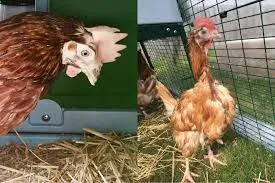fish feed pelletizer machine
វិច្ឆិកា . 05, 2024 13:53 Back to list
fish feed pelletizer machine
The Importance of Fish Feed Pelletizer Machines in Aquaculture
Aquaculture is one of the most rapidly growing sectors in the global food industry. With the rising demand for fish and seafood, the efficiency of fish farming practices has become paramount. A critical component of this efficiency is the feed given to fish, and here is where fish feed pelletizer machines come into play.
Fish feed pelletizer machines are specialized equipment designed to produce high-quality fish feed pellets. These machines are essential for creating balanced diets that meet the nutritional needs of various fish species. The production process involves mixing raw ingredients, such as fish meal, grains, vitamins, and minerals, into a homogenous blend, which is then conditioned, extruded, and pelletized.
One of the main advantages of using a fish feed pelletizer machine is the uniformity and consistency of the pellets produced. Uniform pellets ensure that fish receive a balanced diet, promoting healthy growth and reducing the wastage of feed. This is crucial, as overfeeding can lead to water pollution and increased costs for aquaculture operations. Additionally, the pellets produced are often more digestible compared to traditional fish feed forms, enabling fish to absorb nutrients more efficiently.
fish feed pelletizer machine

Different fish species require different types of feed pellets, and modern fish feed pelletizer machines can produce a variety of pellet sizes and formulations. This versatility allows fish farmers to tailor their feed based on the specific dietary needs of their fish species, whether they are cultivating tilapia, catfish, trout, or ornamental fish. This adaptability not only improves growth rates but also enhances the overall health of the fish, which is essential for maximizing yield.
Another significant benefit of fish feed pelletizer machines is their contribution to sustainability. By producing pellets on-site, fish farmers can use local ingredients, reducing the reliance on imported feeds and minimizing transportation costs. Moreover, these machines can help utilize by-products from other industries, such as agriculture, creating a more circular economy in fish farming.
In terms of automation and efficiency, modern fish feed pelletizers are equipped with advanced technology that streamlines the production process. Automated controls allow for precise adjustments to the cooking temperature, pressure, and moisture content, ensuring optimal pellet quality. This technological advancement not only simplifies operations but also increases the overall output of the feed production process.
In conclusion, fish feed pelletizer machines play a vital role in the aquaculture industry. They enhance the nutritional value of fish feeds, promote sustainable practices, and improve operational efficiency. As the demand for fish continues to rise, investing in high-quality fish feed pelletizer machines will be essential for fish farmers looking to enhance productivity and sustainability in their operations.
-
Multifunctional Chaff Cutter – Efficient Feed Chaff Cutter Machine for Farms
NewsJul.05,2025
-
High-Quality Evaporative Cooling Pad for Efficient Air Cooling Solutions
NewsJul.05,2025
-
High-Quality Scalding Tank for Poultry Processing – Durable & Efficient
NewsJul.05,2025
-
Premium Chicken Coop Solutions Smart Chicken Coop With Exhaust Fan & Wholesale Prices
NewsJul.05,2025
-
High-Quality Poultry Cage for Efficient Farming Durable Chicken Cages Supplier
NewsJul.05,2025
-
Durable Pig Pen Solutions Mobile & Simple Pig Pen for Easy Farming
NewsJul.04,2025






